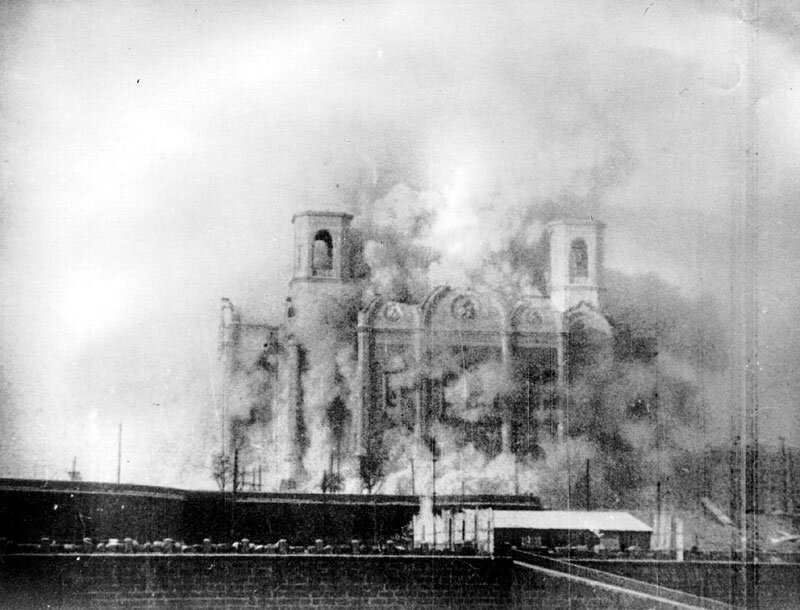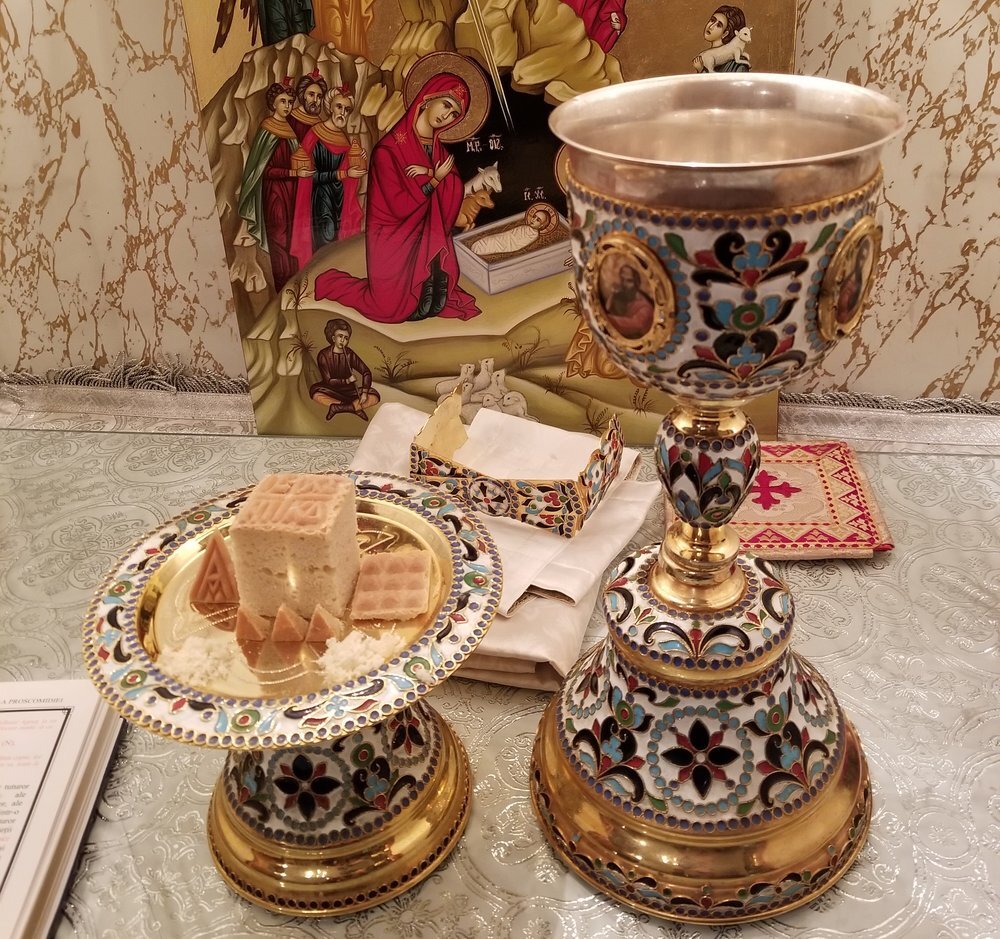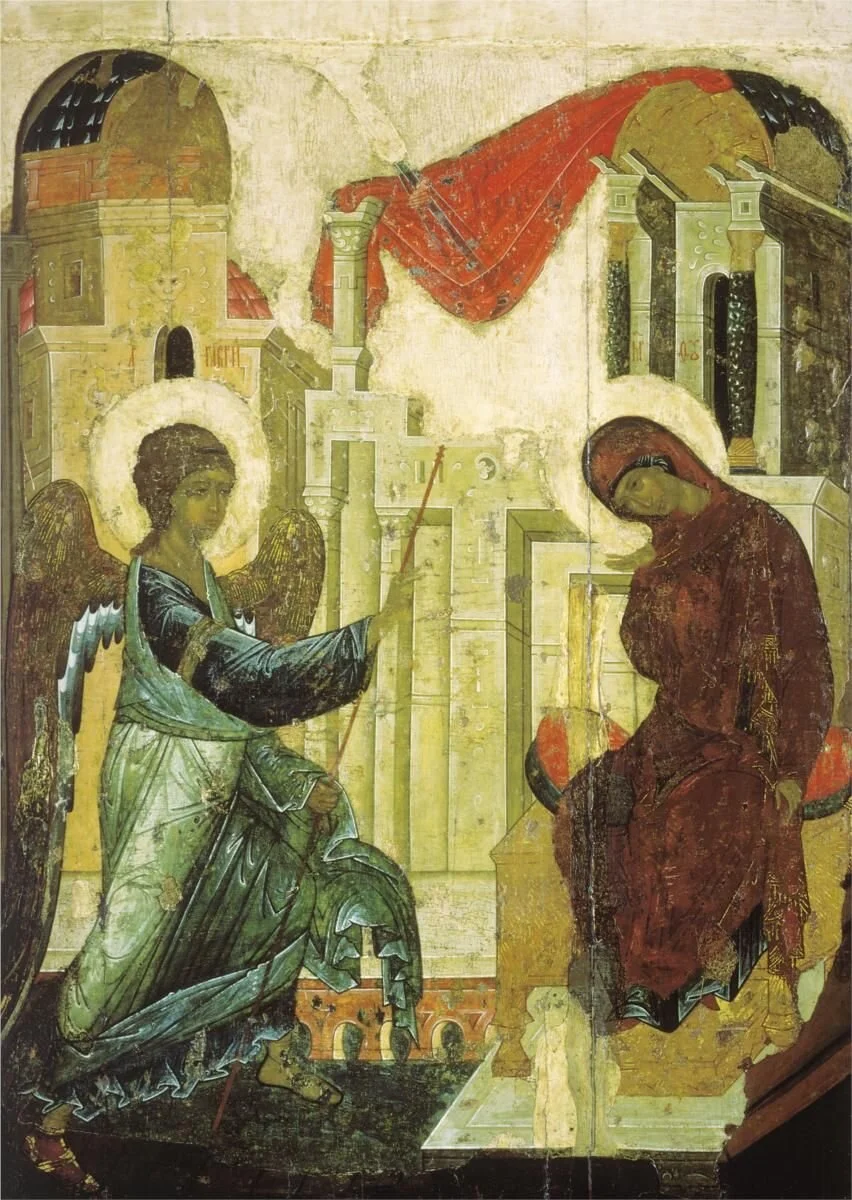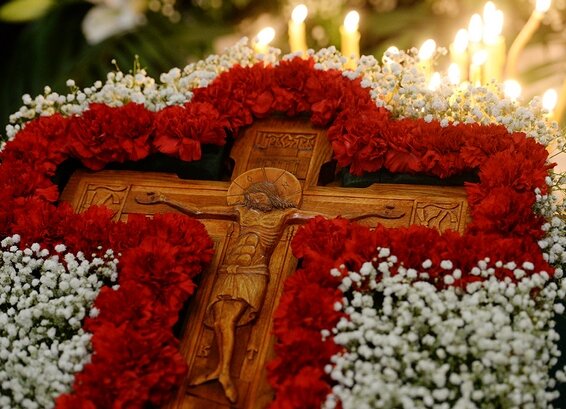Primatial Message of His Beatitude Metropolitan Tikhon
April 6, 2020
My beloved children,
I pray that each of you is keeping physically healthy and is managing to stay spiritually and emotionally strong during these unusual and uncertain times.
On this fifth Sunday of Great Lent, I offer to you a brief word as your primate and father in Christ.
Above all, I encourage you not to dwell on the many “why?” questions but rather to discern in your hearts the “how?” of our present situation.
As He hung upon the Cross, our Lord Jesus Christ did indeed cry out to the Father: “My God, my God, why hast Thou forsaken me?” But if we pull back from that one moment of agony and observe the whole of our Lord’s Passion, we will see that, in so many ways, He is showing us “how,” that is, giving all of humanity the example of sincere obedience, of extreme humility, and of divine love. He is showing us how to receive the great gift of life everlasting and how to change our own lives through that gift.
How, then, can we best approach the present circumstances we find ourselves in?
I myself have been wrestling with this difficult task of shifting my thinking from “why” to “how.” In the past 21 days, I have not celebrated any divine services nor have I been able to attend a live service or receive Holy Communion.
I voluntarily placed myself in quarantine at the Chancery because of the strong possibility that, on several occasions, I may have been exposed to the virus. Although by your prayers I am in good health, I remain in quarantine out of obedience to the civil directive that all travellers from the State of New York must quarantine themselves.
Now I find myself at the Saint Arsenius Skete of the monastery of Saint Tikhon of Zadonsk, yet still unable to pray in person with my brothers. I am grateful for their prayers and for their daily delivery of food, which they carefully place outside my door.
Like many of you, my life has become a series of “zoom” meetings on the one hand, and periods of complete isolation on the other. These have been both difficult and inspiring.
Over the past few weeks, I have electronically interacted with close to 200 individuals. I have met twice with the entire Holy Synod of the Orthodox Church in America, once with the Chancellors of our dioceses, and three times with the members of the Executive Committee of the Assembly of Bishops.
Together with my brother bishops, we have consulted with our clergy, with physicians and medical professionals, with ethical experts, and legal consultants. I have participated in daily briefings with my chancellor and my personal secretary and Archdeacon, as well as with other Chancery staff.
All of us, together, have reviewed the pastoral and liturgical implications of the path that lies before us. During this process, the Holy Synod has carefully listened, prayerfully considered, and extensively discussed the various options, and has provided a series of directives which are available on the Coronavirus Resource page on our website.
In addition to the Church-wide directives, each bishop has provided further direction to his diocese. None of us finds joy in rendering such directives and I suspect that none of you is thrilled to receive them.
Nevertheless, I would hope that all of us would find some consolation in the very act of love we offer for our brothers and sisters through our obedience to the directives of the bishops, but even more so, through our obedience to our present circumstances.
True obedience means going where we might not want to go, just as our Lord, on his way to His passion. Our Lord, in his divine and human person, shows us both the human struggle of passing through painful events and the divine grace that comes through our voluntary acceptance of those events.
Above all, we should remember that we are each voluntarily undergoing a little hardship for the sake of our brothers and sisters.
We are not fasting from Holy Communion because we fear that the precious body and blood of Christ might spread disease but rather because even our gathering together in Church is a risk for transmission of the virus.
We are not refraining from Church attendance because the government is trying to infringe upon our first amendment rights but rather because we don’t want to infect our own friends and relatives, or our priest and his family.
We are not keeping social distance from each other because we dislike or distrust our fellow humans but precisely because we do love them and we don’t want them to die an unnecessary death.
In the life of the martyr Polycarp of Smyrna, we are offered “an example of martyrdom which is conformable to the Gospel.” In contrast to another man, Quintus by name, who pridefully hurried to sacrifice himself as a martyr but then denied Christ, Saint Polycarp, we are told
…lingered that he might be delivered up, even as the Lord did, to the end that we too might be imitators of him, not looking only to that which concerneth ourselves, but also to that which concerneth our neighbors. For it is the office of true and steadfast love, not only to desire that oneself be saved, but all the brethren also.
So I will conclude by encouraging all of us to grow in true and steadfast love, to not only think about our own salvation, our own health, our own good, but rather to look upon our present hardship as an opportunity for us to grow spiritually and to enter more deeply into communion with Christ in our hearts.
For our bishops, this is the time to provide direct pastoral guidance and leadership;
For our clergy, this is the time to strengthen those aspects of their ministries beyond their liturgical service at the altar;
For our faithful, this is the time to remember that communion with Christ is not limited to our partaking of Holy Communion but is something that we can have through our own personal prayer, even if we are unable to participate in the Holy Week and Paschal services this year.
I will speak more with you during the coming days, but in the meantime, I ask that we all may find strength in our Lord Jesus Christ as we enter into the sixth and final week of this very trying season of Great Lent.
















